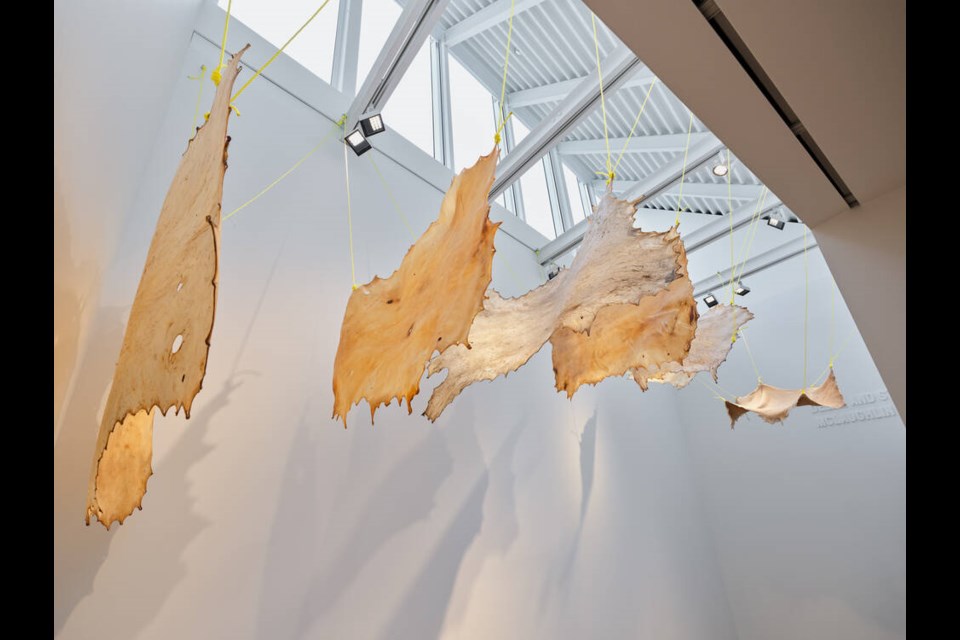Like many Indigenous artists, Sydney Frances Pascal’s creation process is labour intensive, time consuming and extremely personal.
Pascal uses hide tanning to reconnect to her land, her family and her Lil’wat identity, often a deeply personal practice, but one that, courtesy of a large-scale exhibition at The Polygon, others are now invited to witness.
‘We Raised Ourselves, Together and Alone’, a title derived from a poem written by her late grandmother, is an extension of a collection Pascal first displayed publicly in 2019. The hides then were a reflection of the relationships held between her, her mother and her grandmother, but with time, the exhibition has grown to encompass familial ties that stretch back far longer than just a few decades.
“I really wanted to expand that idea and think about the seven generations from the past, and the seven generations forward,” said Pascal.
Each of the seven, carefully prepared hides is unique. There is a mixture of elk and deer, some rawhide, some smoked rawhide, and a single buckskin. The differences will likely be unnoticeable to the average eye, as will the fact that all are in various stages of the hiding process, but the display wouldn't be quintessentially Pascal if it didn't have its hidden depths.
There are a slew of secret details that only those with knowledge of First Nations culture, or only those paying particularly close attention, will see. In the corners of a select few hides, not noticeable upon first glance, are transferred photographs of Pascal's grandmother, aunties, and great, great grandfather. Slightly hidden, they have been included more so as comfort for herself than for the viewer.
“I suppose for me, having the photographs of some of my family and my ancestors was a way to bring their presence into the room," she said. "It's the whole seven generations concept. Its a way for them to know that they are in mind any time I'm making an artistic decision. I'm thinking about how they would feel, how this would affect them."
There are fingerprints on the reverse of each hide left behind with red ochre, implanted by her brother with bear grease after their installation into The Polygon. Each provides a form of protection, said Pascal.
“Even though it’s my name on this exhibition there are so many people and hands involved in the making of these hides, and I really wanted to make that apparent in some way,” she said.
Pascal said she’s grateful to be able to bring such a traditional practice into an institutional space like The Polygon, to be able to share her heritage and culture with the wider community, but also to encourage others to learn of and adapt to a more Indigenous way of thinking.
“I hope the more people see work like this being put in these types of spaces, they feel comfortable knowing that they could also do these practices,” she said.
“It gives the opportunity for people to have those conversations about Indigenous people’s relationship to animals and the land, which is completely different to how animals are usually seen."
Mina Kerr-Lazenby is the North Shore News’ Indigenous and civic affairs reporter. This reporting beat is made possible by the Local Journalism Initiative.



